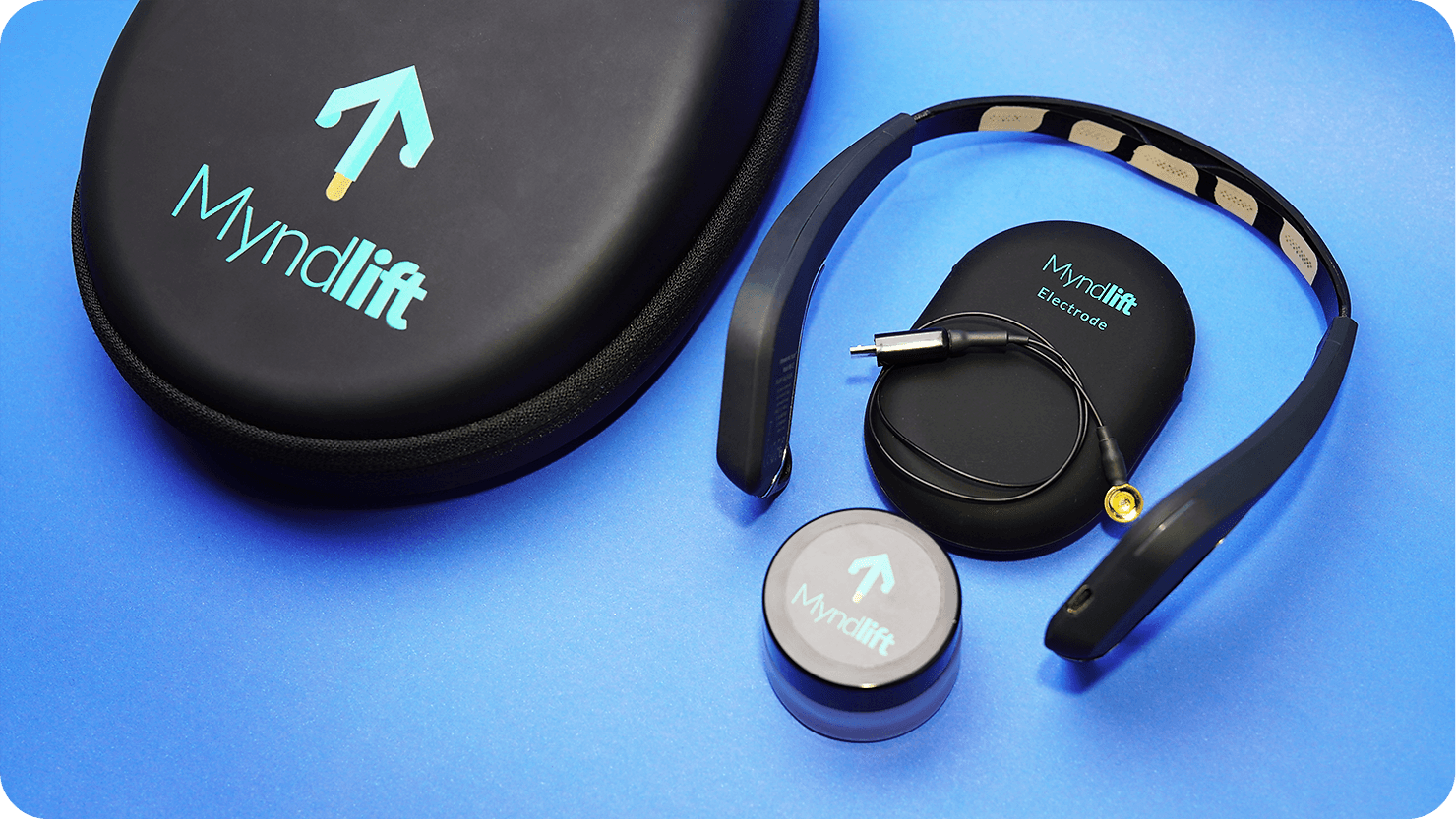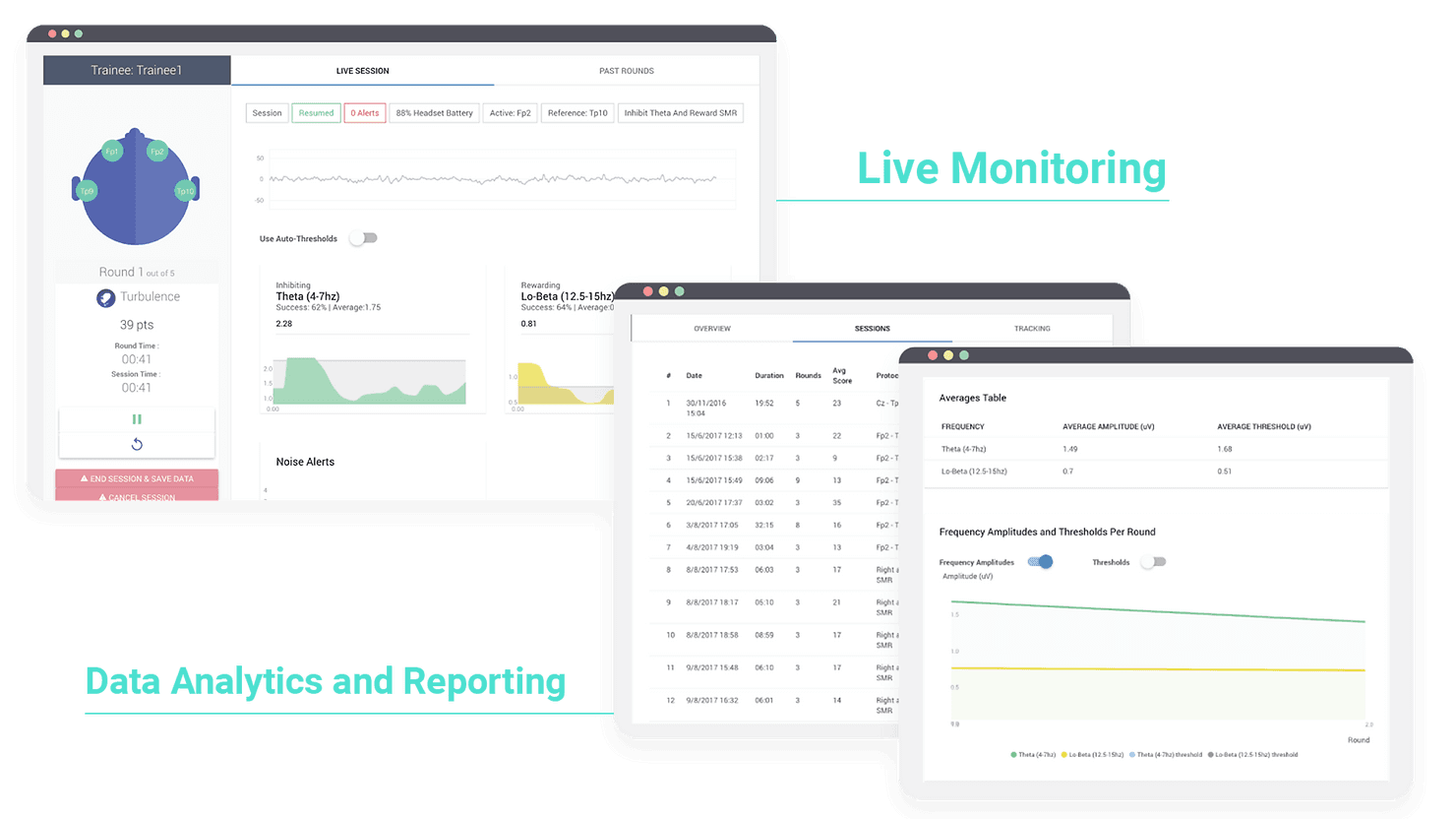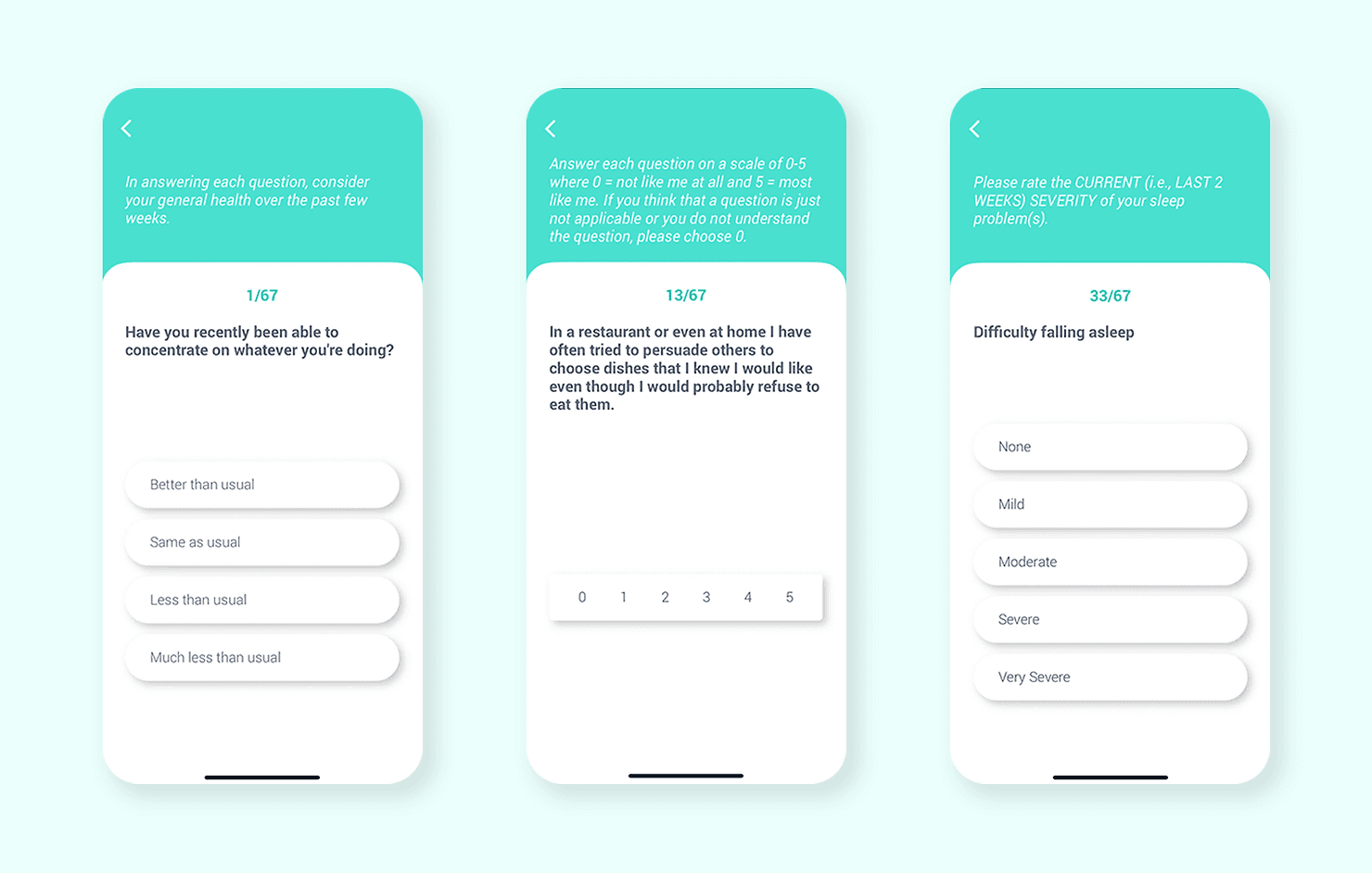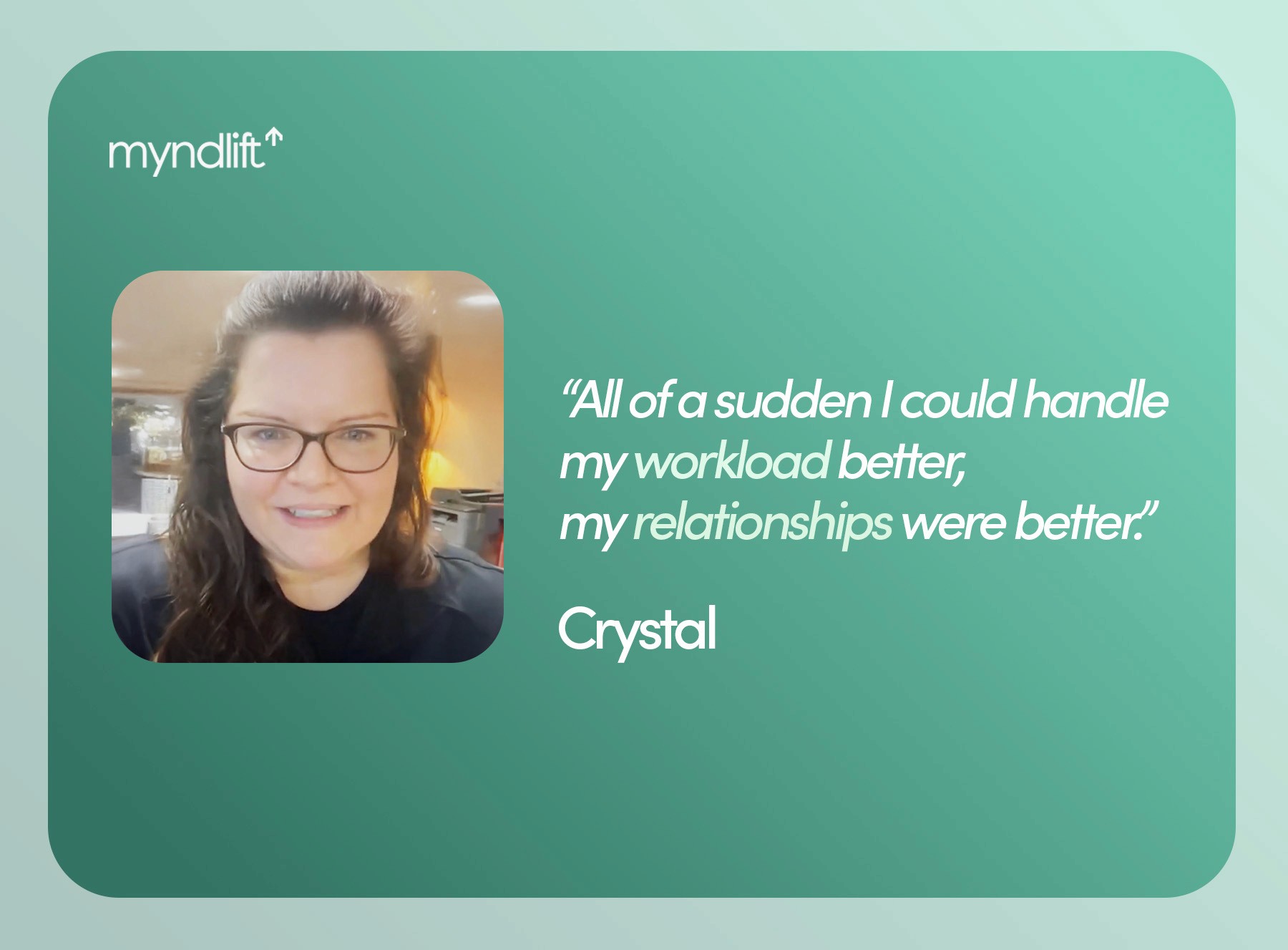Remote neurofeedback can allow you to increase the number of clients, while still providing personalized care and close monitoring to each patient. To set up a successful remote neurofeedback practice, you’ll need powerful software and a few strategies that you can learn from clinicians who already have established remote clinics.
We had a conversation with Dr. Melissa Neff, Dr. Robert Reiner, therapist Dev Patel, and Dr. Thomas van der Burg and asked them to share what they’ve learned during their home neurofeedback journey with Myndlift.
“The greatest advantage is the ability to do neurofeedback whenever you want (under clinical supervision, which is an essential piece of the equation, in my opinion); just the knowledge that you have a tool in your emotion regulation toolbelt that you can use whenever you need it. The independence of the home system is empowering, especially for motivated clients who don't need an appointment to put on that headset and get to work on maximizing their potential,” says Dr. Melissa Neff.
How does the software work?
Myndlift's clinician dashboard allows you to customize protocols, deploy multi-protocol programs, monitor EEG in real-time, deploy EEG assessments and questionnaires, as well as create reports.

Your client gets an electrode that can be placed anywhere on the scalp, electrode conductive paste, a Muse headset, and a sleek case to store it all. Myndlift offers a user-friendly facing app for both iOS and Android, with neurofeedback games and videos, insights, and statistics.
“The best thing about Myndlift is the ease of use. The software is brilliant. Whoever wrote that software did a very good job,” said Dr. Robert Reiner, executive director and founder of Behavioral Associates.

Myndlift provides a powerful solution for some of the major barriers in neurofeedback. But before you start your own remote neurofeedback journey, consider the following tips from other clinicians who have successfully implemented remote neurofeedback.
Tip #1: Define the logistics precisely
There are some technicalities you may want to pay attention to before you begin offering home neurofeedback training to your clients. Your team should think about the logistics around hardware, packaging, and payments.

“I usually have clients order the Muse themselves, but I have amassed a hardware ‘store’ in my home office full of electrodes and paste and headset cinchers that are ready to go for new clients. Payments are handled electronically - I use Square, and I bill and send clients bills monthly over email. Zoom has been so helpful for our regular check-ins, especially as a way to troubleshoot logistical problems,” says Dr. Melissa Neff.
In some clinics, clients can rent Myndlift, “In the packages we sell now there are two options. Either people order their Muse, or we provide them the Myndlift toolbox by renting it,” explains Dr. Thomas van der Burg.
Tip #2: Prepare the clients
It’s important to set aside time to tell clients how the system works and let them know there might be some frustration in the beginning. Walking people through the first time they do neurofeedback at home can have a big impact on their compliance and overall results.
“I took some extra time to educate them on how the headset works and what steps they can take to self troubleshoot problems. This significantly cut down on client issues,” says Dev Patel.
According to Dr. Thomas van der Burg, roughly 90% of people had a smooth transition from onsite to online neurofeedback:
“I did a couple of online training sessions in which I used my Myndlift headset and showed them how to do it. They managed just fine.”
Tip #3: Combine tests
Some clinicians combine information from the initial consultation with results from psychological testing, such as the MMPI-2 personality test, as well as neuropsychological testing or qEEG brain mapping.
“I would insist on doing MMPI on every patient. The first three scales on the test measure neuroticism. Especially scales one and three: hysteria and hypochondriasis. It turns out that patients who have elevations on these two scales don't get better by using conventional medical procedures. These are the people who do not report feeling better, even if they have a surgical intervention. They are invested in their symptoms. But, they sometimes do well with neurofeedback,” explains Dr. Robert Reiner.
After the neurofeedback protocol is set up, clients can continue training in the comfort of their homes. In this sense, neurofeedback is more like daily homework closely monitored by a clinician than an intervention that requires the patient to physically visit the office.
“I love the option to alternate protocols. I usually create an endurance protocol and a strength protocol. That’s why the possibility to alternate programs or to give clients the option to choose a program works great for me,” says Dr. Thomas van der Burg.
Tip #4: Make sure they know you’re following their progress
Home neurofeedback doesn’t end with setting up the protocols. After each session, you can review your client’s progress using the web dashboard.
You can see when they did each session, which protocol they used, the percentage of noise, a Fast Fourier Transform analysis, and the average amplitude and threshold for each trained frequency band throughout the session. You also have the option to access home sessions remotely in real-time, allowing you to view the raw EEG as it is being recorded and make adjustments as needed.

“Patients don’t want to think that there’s just a setup with a protocol and people forget about them. They need to know that someone is looking at their data periodically and makes modifications to the protocols. I think that’s very important. They want to know that someone is looking after them. I can’t overstate the importance of it,” says Dr. Robert Reiner.
Much needed support in uncertain times
Most of the clinicians report that the greatest advantage of home neurofeedback has been evident during the Covid-19 pandemic.
“Our clients were able to train in the comfort of their own homes, and that significantly cuts down barriers such as having to come to the office in person, finding time to schedule with a busy life, and many other issues that frequently come up when clients have to come into the office to train,” explains Dev Patel.
Some clients were first introduced to the home neurofeedback software during the pandemic.
“I’ve offered all of my clients the possibility to train at home. For one client, I did the first qEEG in August, and the second one in December. I usually want to wait a year between the qEEG’s to see the real numbers, but he already felt the changes which I can directly relate to the protocols I’ve used. He was really satisfied,” says Dr. Thomas van der Burg.
Tip #5: Nurture Compliance
Some clients will start doing neurofeedback at home but won’t follow through. That’s why it’s crucial to keep them motivated.
“It’s a good product. It works. But what I usually do is, I keep the data from the first patient who did home neurofeedback and I show it to my clients. I show them the results,” says Dr. Reiner.
Dr. Reiner’s first home neurofeedback patient was a 38-year-old clinical psychologist who was also a psychoanalyst. She had no medical history, but she suddenly started experiencing severe panic attacks.
“She came into the office right before Thanksgiving of 2017. Her panic attacks were so bad that she was pacing around the waiting room almost panting, like a dog. She was humiliated because she was put on temporary medical leave from her job at the hospital where she worked as a psychologist. I said to her, ‘You know what, rather than coming once a week’, which was adding stress to her life, I asked, ‘Why don’t you simply take this home with you?’”
Dr. Reiner started her on a protocol for relaxation (reinforcing alpha and suppressing high beta) in which she would train daily: 60 minutes/day for 50 days.
“I did a qEEG and she was a mess. Both temporal lobes were firing, the maps were bright red, and there were five standard deviations of the mean all coming from the amygdala. When I saw her again, right after New Year’s Eve, I almost didn’t recognize her. She was relaxed and composed. Part of it, to be fair, was due to her getting her job back, but her panic attacks disappeared. Then, we ran a qEEG again, and I wouldn’t say that it was all green, but it was pretty close. There was some yellow in the temporal lobes, but everything else was cleaned up.”
His client was so impressed with how the sessions helped her, that she signed up to be trained on how to do neurofeedback herself!
“Ironically, she went from being my client to being my student because I teach the certification course. When we ran the qEEG again, in April, it was completely green. That was the first case. When I show those qEEG maps to people, it’s pretty compelling.”
Tip #6: Be Encouraging
The initial excitement might wear off and that's why you should always look for ways to encourage clients to keep up with the good work.
You can track their self-reported progress with the Myndlift assessment symptom questionnaires, in which clients answer questions in the app before doing their neurofeedback training.

“After my clients have answered their questionnaire presented by the symptom tracker, and are done with the session, I send them an email or text encouraging them to keep up the good work and, when relevant, to congratulate them for the big improvement. If they have any specific or technical needs, I contact them via different platforms such as Skype, FaceTime, or GoToMeeting, depending on their needs and the technology available to them,” says Juan Ricardo Diaz, MFT, NFP.
Dr. Melissa Neff also pays close attention to the client’s progress, “My clients love the graphs and charts Myndlift offers, and we often do screen-shares so they can view their progress. Most of my clients (or their parents) are highly intelligent, differently wired folks who are interested in the science of what is happening in their brain, and they are especially delighted when the results match up with the changes they are noticing in themselves.”
Summary
To make a smooth transition from an onsite to an online neurofeedback practice, you may want to consider key insights from clinicians who have effectively implemented remote neurofeedback.
Tip #1: Define the logistics precisely
Tip #2: Prepare the clients
Tip #3: Combine tests
Tip #4: Make sure the clients know you’re following their progress
Tip #5: Nurture compliance
Tip #6: Be encouraging
Remote training makes it possible for clients to do neurofeedback daily and to choose the ideal time of the day to train. They won’t have to contend with traffic jams, inconvenient appointment times, or expensive in-clinic visits to be successful with neurofeedback.
In addition, by offering home neurofeedback you can scale your practice, increase revenue, help more clients, and offer the most innovative neurofeedback technology out there!
About the author:
Dubravka Rebic
Dubravka Rebic puts a lot of time and energy into researching and writing in order to help create awareness and positive change in the mental health space. From poring over scientific studies to reading entire books in order to write a single content piece, she puts in the hard work to ensure her content is of the highest quality and provides maximum value.




